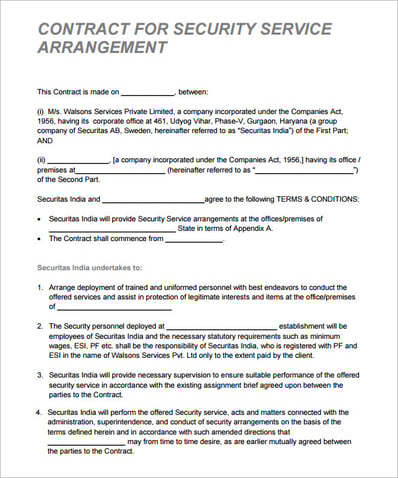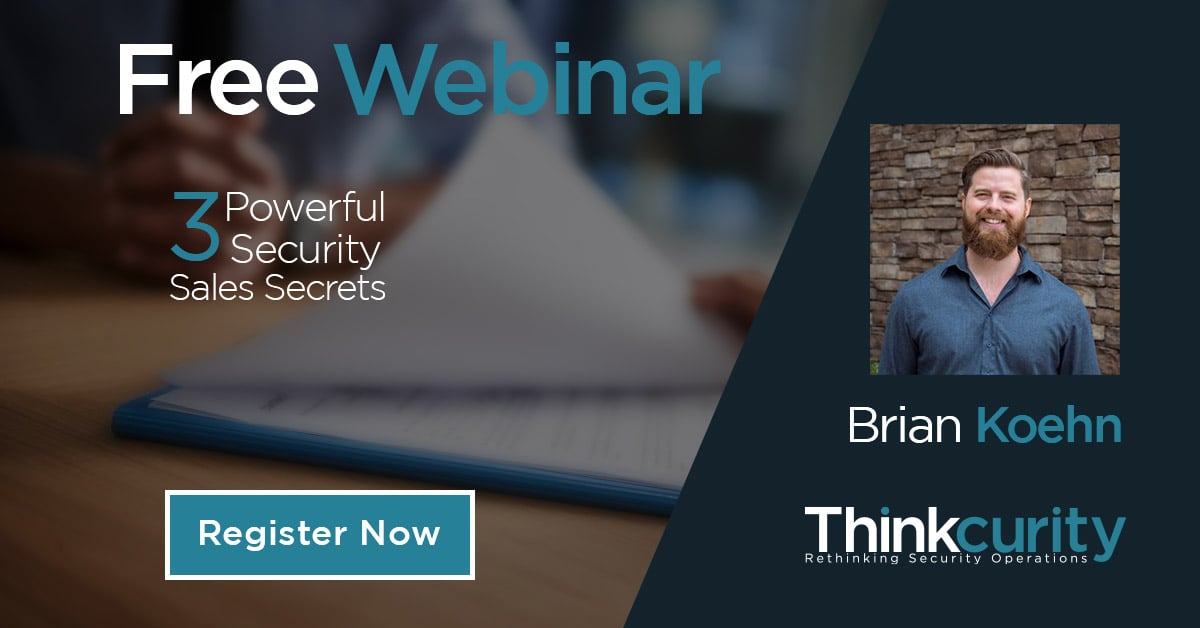The Thinkcurity team recently presented the first live webinar with our partners at ClientPoint, a simple and easy to use enterprise security sales proposal platform.
The Thinkcurity security training webinar series is Silvertrac’s newest thought leadership endeavor bringing together speaking partners & security experts to deliver business intelligence to the physical security industry.
ClientPoint’s Content Chief Brian Koehn recently chatted with us about the modern security buyer, their unique challenges and how contract security companies can bid & land new contracts by making a few simple changes to their contract proposal process.
Throughout ClientPoint’s tenure, they have continually recognized the need for an automated security contract proposal and have a deep understanding of the nuances that go into these proposals. With this industry knowledge, they have successfully continued to evolve their proposal platform to meet the needs of security companies which now account for 40% of their own customer base.
Private Security Buying Challenges
The modern security buyer suffers from a number of stressors that can cause challenges, push-back, or even dead-deals when going through the buying process. Some of these stressors include:
- Decision Fatigue - The phenomenon where our brains become tired when participating in long decision making processes, preventing us from making a well-informed, unbiased decision.
- Ghosting - When a prospect ends the relationship with a potential security vendor suddenly with no further communication.
- Meeting Remorse - The regret or grief a prospect feels when they don’t trust the value of a meeting causing them to no-show or be unengaged on the call.
- Challenge Differentiation - Often times, when faced with too many choices, buyers struggle to find the differences between the vendors they are evaluating causing them to feel overwhelmed or become prone to substitution bias.
- Underwhelming Buying Process - With so much immediate stimuli at our fingertips (think Netflix, YouTube, etc…), our attention spans continue to decrease. Because the buying process is often a time-consuming activity, prospects are underwhelmed at the lack of instant excitement to the point that they often forget what happened in meetings that occurred just yesterday.
These challenges can be incredibly daunting to an ill-equipment security sales rep. However, Brian and the ClientPoint team have provided the tools to help guide the modern security buyers’ journey so that prospects don’t get lost in the buying process or drop the deal completely.
("Buying challenges" start at 5:11 in the Webinar on Demand)
Engaging the Modern Buyer
The key to engaging security service prospects is to guide them through a personalized sales journey by assessing their needs, concerns, and biases throughout the process.
First and foremost, it is critical that a sales rep creates a space for the prospect to get to know them as a person. A great way to do this is through personalized videos. It makes the sales journey start to feel more conversational instead of transactional.
Lasting no more than 2 minutes, a personalized video helps the prospect create a more personal connection with the sales rep. Video allows the prospect to better determine what kind of person the rep is and whether they want to spend time with them or not.
Once a rep gets a prospect into a meeting, surveys and assessments can help determine the prospect’s unique needs to better guide the conversation. Sales reps can use this to establish a differentiation between themselves and the competitor based on the prospect’s ultimate wants and needs.
By using leading questions, a sales rep can determine what is most important to the prospect, what price point they are looking for, what services are most valuable, what the use-case is for the services or products being evaluated, etc…
Based off the answers to these types of questions, a sales rep can use the third tool in their arsenal. Customer case studies, reviews & testimonials help create clear differentiators between their services and their competitors. Using actual customer information to drive home the value of your services is an easy way to get your prospects to build trust in your organization.
Essentially, the rep has just created a deal specifically tailored for the prospect’s needs so a well-informed decision can be made and increase the likelihood of converting them into a customer.
Bonus Tip: Send another personalized video when sending off proposal documents. Once a rep has built a personal connection, it is important to maintain that relationship throughout the course of the prospect’s journey.
("Tactics to engage a prospect" start at 10:10 in the Webinar on Demand)
So, What’s Wrong with the Average Proposal?
Average proposals equal lost contracts! In order to build out a high quality modern proposal, it is important to first identify what an average or bad proposal looks like. The biggest issue with the average security contract proposal is that it can immediately take the sales journey from relational to transactional and trigger the cognitive biases that prevent a deal from happening.
The modern day security service prospect is looking for a personalized, engaging and digital experience. Remember, the buyer’s attention span is short and the sales process is generally taxing. The traditional paper proposal in an old-school binder isn’t going to cut it anymore.

Traditional contract proposals are underwhelming.
Key-decision makers often don’t see a proposal until their team puts the final document in front of them. If they haven’t been included in previous conversations and are left to fill in any missing gaps themselves, then your average proposal will likely be underwhelming.
An average proposal leaves a lot of room for confusion, which could make or break deal once it’s in the decision maker's hand. A sales rep isn’t going to be able to control the assumptions they make.
Without any sort of digital automation, security proposals can take upwards of 3 hours to create from scratch. Sales reps can’t stand building them. They aren’t easily editable, and there are no analytics to measure engagement.
("Full proposal analysis" starts at 22:00 in the Webinar on Demand)
Building a Great Proposal
Many of the same great tactics that are used at the start of the sales journey are the same ones that are used to build a great proposal.
When a sales rep first sits down to build the initial proposal, they should start by putting themselves in the prospects shoes. Using the information they have gathered through the course of the sales cycle (like the survey and assessment data).
By thinking through what the prospect needs, their goals, what concerns they may have and of course their price point, a sales manager can build a customized proposal that helps guide the final steps in the sales journey.
Again, the goal is to create differentiation between the service the sales rep is trying to sell and their competitors. They also want to minimize the decision fatigue and the overwhelmingness that can come with reviewing proposals.
Next, the sales rep should use this information to tie in relevant content. The use of case studies or customer testimonials in a proposal is a great way to validate how these products and services can meet the specific needs of the potential customer.
Case studies and other relevant content are also a great way to engage decision makers that are just being introduced to the vendor for the first time via the proposal.
Finally, a personalized video that is embedded into the proposal is the icing on the cake. Again making it no more than 2 minutes, this video should include a summary of the proposal and the relevant content that has been attached.
This video will help to keep the relationship top of mind and continues to promote the goodwill of the sales rep and their company. It also allows the decision makers to get a sense of who the vendor is and what they have to offer, if they haven’t previously been introduced.
It is critical to maintain the relational aspect throughout this part of the sales journey. The personalized video makes all the difference between a friendly partner relationship and a transactional vendor relationship.
Now, all of this can be done through ClientPoint’s automated proposal platform (plus so much more). With proposal automation, security sales management can run important analytics on who is engaging with the proposal and how they are engaging with it.
The data shows if a prospect opened it, when they opened it, what parts of the proposal they are looking at and how long they are looking at it.
Based off these metrics, the sales rep can follow-up appropriately and use tools like eSignatures to move the process along swiftly, with up to a 30% increase in signed documents.
("The guide to building a great proposal" starts at 25:43 in the Webinar on Demand)
Growing Securitas Sales By 25%
Securitas, one of the largest security guard companies in the world, is a great example of how the use of proposal automation and analytics can help to drastically increase the number of closed deals.
Through the use of proposal automation, analytics with notifications, and a proposal management center, Securitas was able to expand their business by 25% in one year. Given that the organization has over 150,000 clients and operates in 58 countries, this percentage is significant, to say the least.
How did these things actually help?
- Proposal Automation decreased proposal creation time from 3 hrs to 30 min, severely reduced sales rep procrastination, and increased sales reps time to sell.
- Analytics & Notifications ensured reps were following up appropriately, and the analytics allowed sales reps to see what the buyers cared about most in real time.
- The Proposal Management Center allowed the organization to train on proper proposal techniques, ensured all proposals were accurate, and allowed the team to forecast and strategize based on real-time data.
("Securitas' case study" starts at 36:08 in the Webinar on Demand)
Q&A
What if your company only deals with manned guards?
ClientPoint was originally built for manned security guard companies. They then moved into working with companies that offered additional security services. Even with the commodities that come along with manned security proposals, the platform continues to be a great tool.
What is a good approach to get your first meeting?
With a personal video show the prospect how you can help. Talk about their pain points and what your solution has to offer. If possible (without being creepy), use their facilities in your video. Show them the vulnerabilities your products/services solve for. LinkedIn Sales Navigator is also a great tool.
How do I start a proposal?
Much of the security proposal process is based on the industry and product. However, all great proposals start with gratitude, a little bit of your company’s origin story, how what you do works, a description of what you are selling, what the investment looks like, and finally a call-to-action (ie: sign here). Case studies or recommendations are also great to include. ClientPoint offers assistance in creating your first proposals should you want some additional help.
What are options for start-ups with little to no clients?
ClientPoint offers a start-up program for $997/year that includes proposal make-over, live group coaching, and more.
("Q&A" starts at 43:12 in the Webinar on Demand)
Want to learn more about ClientPoint's tools for security companies or chat with Brian and his team one-on-one? Check them out at ClientPoint.net.
Don’t forget to subscribe to Thinkcurity be notified of our next live event!




